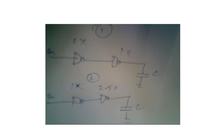balavinayagam
Member level 3
hi all!
this was a question that i got in my interview. i do not know the exact answer.
which one will be the fastest among the two??
what is that 1X or 2X denote-the amount of cap loading or its sizing?
pls clarify this
thanks in advance
---------- Post added at 21:56 ---------- Previous post was at 21:56 ----------

this was a question that i got in my interview. i do not know the exact answer.
which one will be the fastest among the two??
what is that 1X or 2X denote-the amount of cap loading or its sizing?
pls clarify this
thanks in advance
---------- Post added at 21:56 ---------- Previous post was at 21:56 ----------
